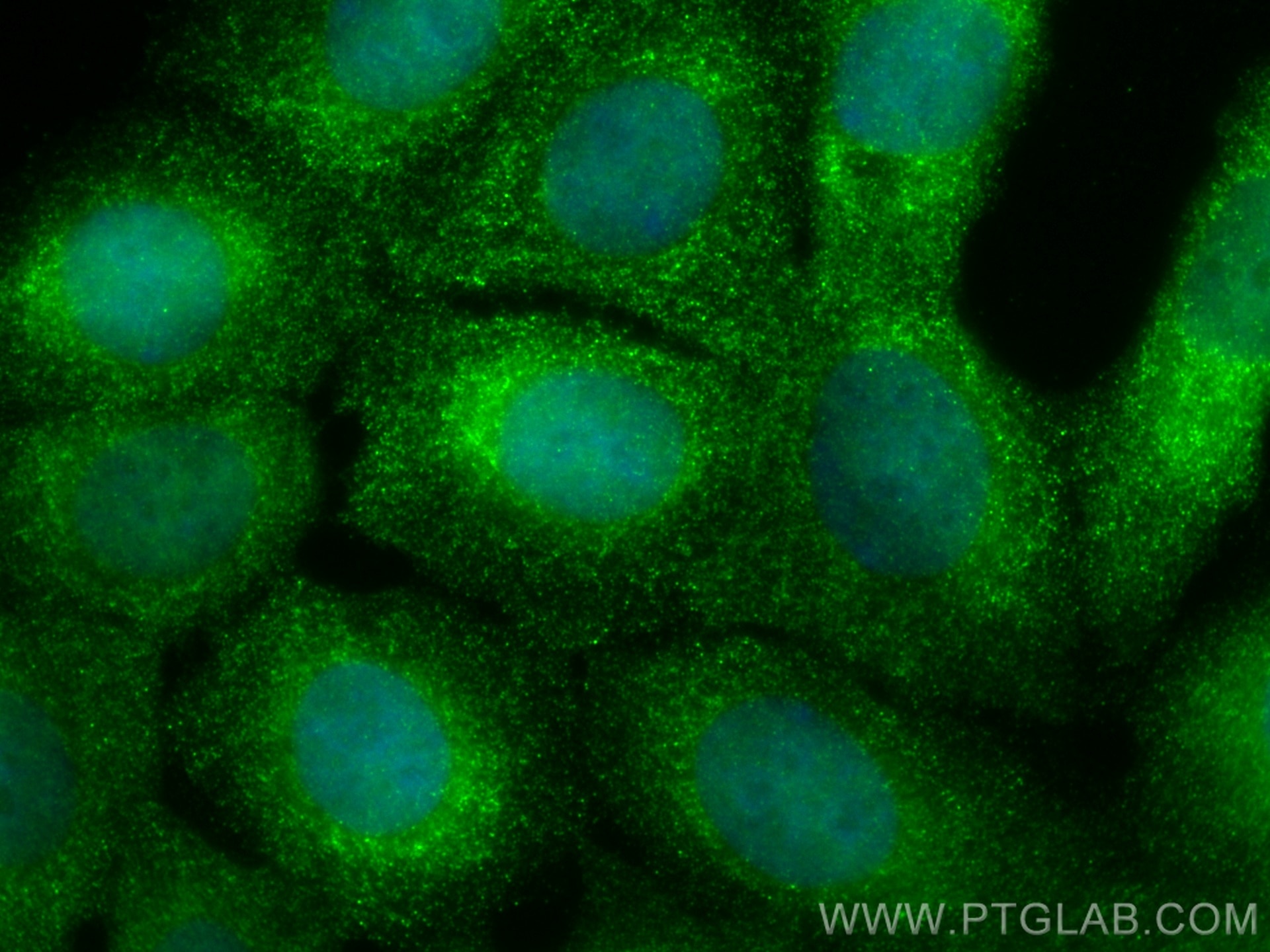Tested Applications
| Positive IF/ICC detected in | MCF-7 cells |
Recommended dilution
| Application | Dilution |
|---|---|
| Immunofluorescence (IF)/ICC | IF/ICC : 1:50-1:500 |
| It is recommended that this reagent should be titrated in each testing system to obtain optimal results. | |
| Sample-dependent, Check data in validation data gallery. | |
Product Information
CL488-66526 targets IGF2BP3 in IF/ICC applications and shows reactivity with Human, mouse, rat samples.
| Tested Reactivity | Human, mouse, rat |
| Host / Isotype | Mouse / IgG1 |
| Class | Monoclonal |
| Type | Antibody |
| Immunogen | IGF2BP3 fusion protein Ag6349 Predict reactive species |
| Full Name | insulin-like growth factor 2 mRNA binding protein 3 |
| Calculated Molecular Weight | 64 kDa |
| Observed Molecular Weight | 65 kDa |
| GenBank Accession Number | BC065269 |
| Gene Symbol | IGF2BP3 |
| Gene ID (NCBI) | 10643 |
| RRID | AB_2934475 |
| Conjugate | CoraLite® Plus 488 Fluorescent Dye |
| Excitation/Emission Maxima Wavelengths | 493 nm / 522 nm |
| Form | Liquid |
| Purification Method | Protein G purification |
| UNIPROT ID | O00425 |
| Storage Buffer | PBS with 50% glycerol, 0.05% Proclin300, 0.5% BSA, pH 7.3. |
| Storage Conditions | Store at -20°C. Avoid exposure to light. Stable for one year after shipment. Aliquoting is unnecessary for -20oC storage. |
Background Information
IGF2BP3, also named as IMP3, KOC1 and VICKZ3, belongs to the RRM IMP/VICKZ family. It is one of the RNA binding proteins involved in mRNA localization and translational control. IGF2BP3 is expressed during embryogenesis, as well as in some malignant tumors. It can be used as an independent prognostic factor for osteosarcoma.
Protocols
| Product Specific Protocols | |
|---|---|
| IF protocol for CL Plus 488 IGF2BP3 antibody CL488-66526 | Download protocol |
| Standard Protocols | |
|---|---|
| Click here to view our Standard Protocols |



